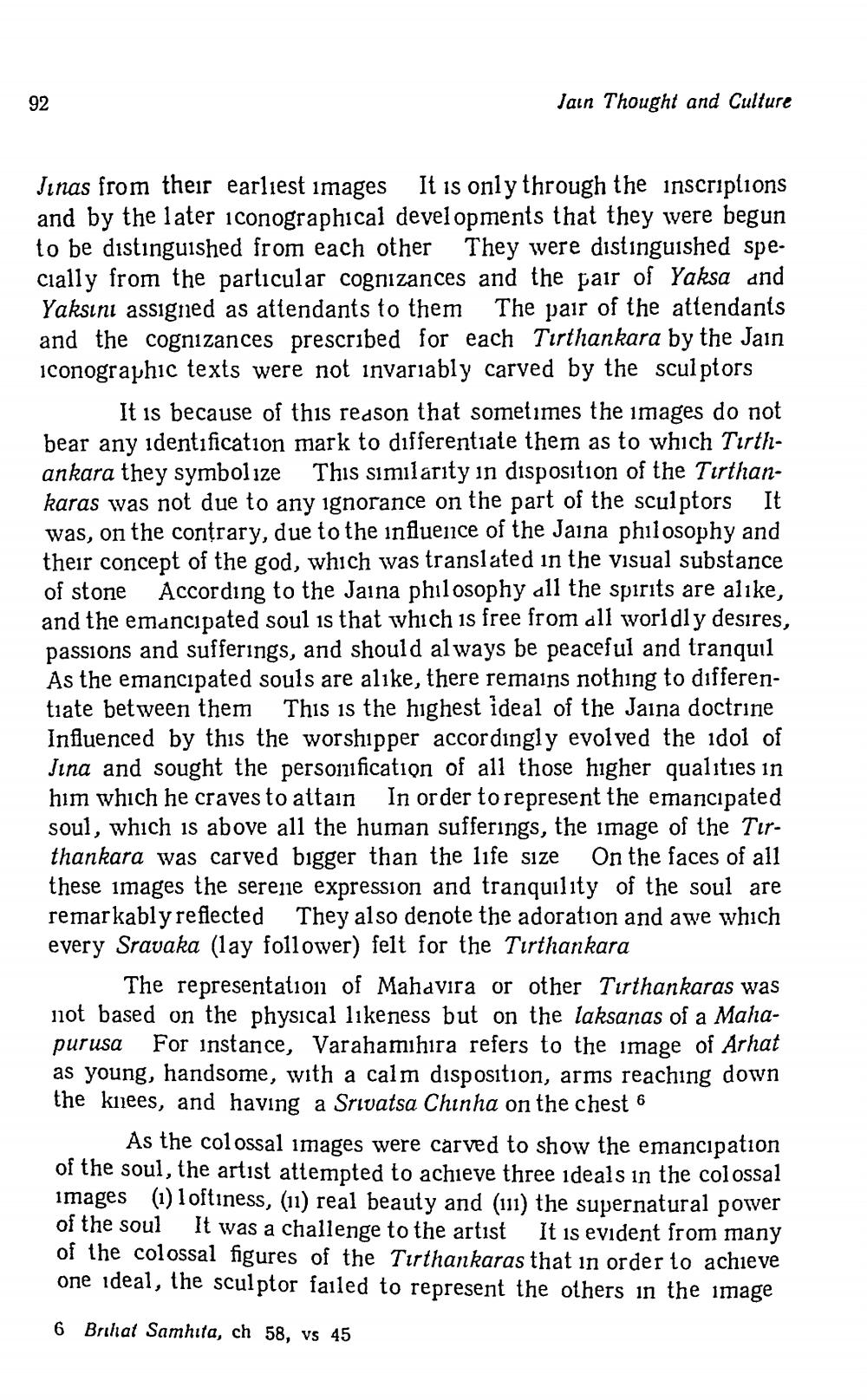________________
92
Jain Thought and Culture
Jinas from their earliest images It is only through the inscriptions and by the later iconographical developments that they were begun to be distinguished from each other they were distinguished spe. cially from the particular cognizances and the pair of Yaksa and Yaksını assigned as attendants to them The pair of the attendants and the cognizances prescribed for each Tirthankara by the Jain iconographic texts were not invariably carved by the sculptors
It is because of this reason that sometimes the images do not bear any identification mark to differentiate them as to which Tırthankara they symbolize This similarity in disposition of the Tirthankaras was not due to any ignorance on the part of the sculptors It was, on the contrary, due to the iniuence of the Jaina philosophy and their concept of the god, which was translated in the visual substance of stone According to the Jaina philosophy all the spirits are alike, and the emancipated soul is that which is free from all worldly desires, passions and sufferings, and should always be peaceful and tranquil As the emancipated souls are alike, there remains nothing to differentiate between them This is the highest ideal of the Jaina doctrine Influenced by this the worshipper accordingly evolved the idol of Jina and sought the personification of all those higher qualities in him which he craves to attain In order to represent the emancipated soul, which is above all the human sufferings, the image of the Terthankara was carved bigger than the life size On the faces of all these images the serenie expression and tranquility of the soul are remarkably reflected They also denote the adoration and awe which every Sravaka (lay follower) felt for the Tırthankara
The representation of Mahavira or other Tirthankaras was not based on the physical likeness but on the laksanas of a Mahapurusa For instance, Varahamihira refers to the image of Arhat as young, handsome, with a calm disposition, arms reaching down the knees, and having a Srivatsa Chinha on the chest 6
As the colossal images were carved to show the emancipation of the soul, the artist attempted to achieve three ideals in the colossal images (1) loftiness, (11) real beauty and (111) the supernatural power of the soul It was a challenge to the artist It is evident from many of the colossal figures of the Tirthankaras that in order to achieve one ideal, the sculptor failed to represent the others in the image 6 Bruhat Samhita, ch 58, vs 45




